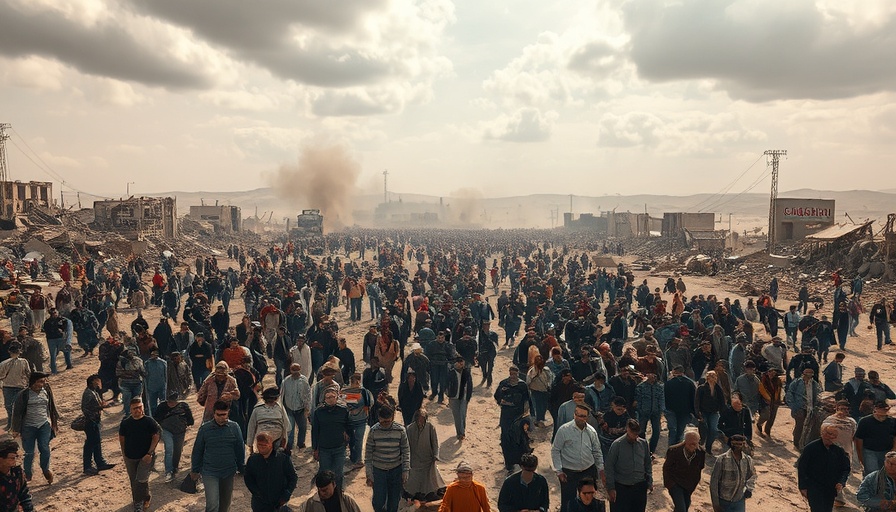
Amid Hope and Desperation: The Quest for Peace in Gaza
As families of hostages held by Hamas continue to grapple with uncertainty, U.S. Middle East envoy Steve Witkoff reached out with news that ignites both hope and skepticism. During a recent meeting, he assured the families that a strategic plan aimed at ending the ongoing Gaza conflict is being developed collaboratively with the Israeli government. This announcement marks a crucial turning point as President Donald Trump's administration has made peace in the region a top priority. Yet, with numerous past attempts resulting in deadlock, observers remain cautious about the viability of this new approach.
The Status Quo: Humanitarian Crisis Complicates Peace Efforts
Witkoff’s claims came at a time when the humanitarian conditions in Gaza are increasingly dire. Reports indicate that living conditions have deteriorated rapidly, exacerbating the emotional toll on the families of hostages. The Palestinian enclave, which has been under Hamas control since 2007, has been subject to Israeli military actions in response to persistent threats. Many are questioning whether genuine peace is achievable when the humanitarian situation remains unresolved. As Witkoff noted, "We have a very, very good plan... for the reconstruction of Gaza." However, peace and reconstruction cannot be achieved without addressing the very real human suffering experienced by civilians.
Hamas's Position: Disarmament and the Demand for a State
Complicating matters further, Hamas has historically stated it would not disarm unless a fully independent Palestinian state is established. This steadfast refusal raises significant questions about any potential negotiation strategies. The group's unwillingness to relinquish arms suggests deeply entrenched positions on both sides, making it essential for the U.S. to navigate this landscape delicately and thoughtfully. Recent discussions reveal that while there may be pathways to peace, it ultimately hinges on addressing the broader issue of sovereignty and recognition for the Palestinian people.
Lessons from the Past: Examining Historical Attempts at Resolution
The journey toward peace in the Middle East is not new; historical precedents, such as the Oslo Accords of the 1990s, showcase the challenging dynamics between negotiation and conflict. Each time a potential solution has been proposed, many have expressed optimism only to be met with disillusionment when talks fell through. These attempts serve as reminders of the complexities of geopolitics in the region and the dire need for patience and understanding among stakeholders.
Future Outlook: Balancing Optimism and Caution
While Witkoff’s statements have stirred hope, observers are mindful of maintaining a healthy skepticism. Peace in the Middle East requires more than a strategic plan; it necessitates a fundamental shift in attitudes and behavior from all parties involved. Moving forward, international stakeholders—notably the U.S.—must facilitate discussions that move beyond purely political maneuvers and towards real human connections, acknowledgment of grievances, and respect for differing narratives.
Conclusion: Taking Action in the Face of Uncertainty
As the world watches attentively, it is crucial for the public to engage with these developments in a meaningful way. Advocacy for peace, humanitarian assistance to affected civilians, and a commitment to informed dialogue can all contribute towards constructing a future that prioritizes understanding and resolution. The situation in Gaza remains fluid, but through collective efforts, there lies potential for a more hopeful and sustainable path forward.
 Add Row
Add Row  Add
Add 



Write A Comment